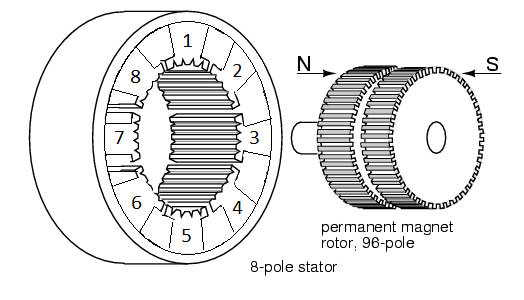There are motors everywhere in the world around us– in cars, printers, computers, washing machines, electric razors, you name it. Unfortunately, there are a lot of people (myself included up until very recently) that wouldn’t know what to do if they were handed a motor and told to run it. So I decided that I want to change that. Let’s learn to run a stepper motor!

Stepper motors are one of the three main classes of motors: the other two are DC motors and servo motors. As a brushless motor, the central shaft of a stepper motor does not physically touch anything in order to rotate. Rather, stepper motors use electromagnets that are concentrically located around the central shaft to induce it to rotate.
But how do you actually control and run a stepper motor? There are two modes that can be used to operate a stepper motor: unipolar and bipolar mode. Unipolar mode only operates in the positive voltage range. Normally, this would mean that current could only be driven in one direction through the electromagnetic coils, producing a magnetic field in only one direction, implying that the central shaft would only be able to tilt back and forth between the two electromagnets.

Bipolar hybrid stepper motors also have current flow in two different directions through the coils. Instead of using a central tap, they use both positive and negative (bipolar) voltage to induce the current flow in both ways through the coil. Because current is able to flow through the entire coil, instead of just half of the coil in unipolar mode, bipolar stepper motors have more torque to rotate and hold the central shaft in place.
